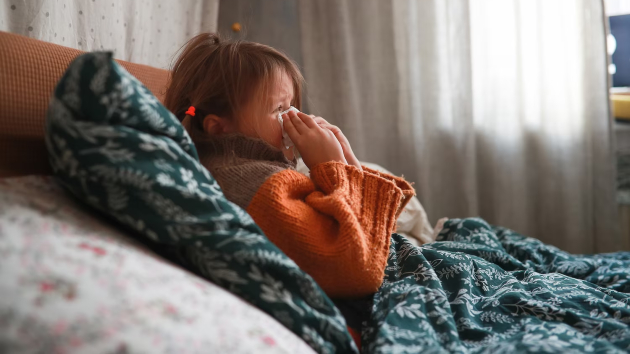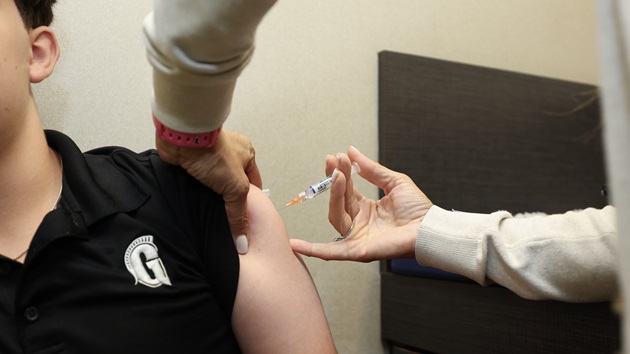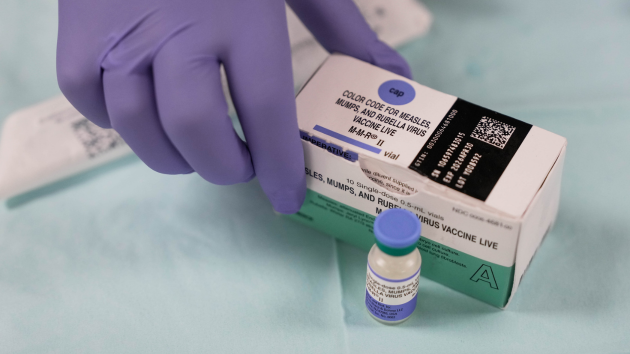Pediatrician shares water safety mistakes to avoid amid rise in drownings
Written by ABC Audio ALL RIGHTS RESERVED on June 18, 2024

(NEW YORK) — Drowning is the leading cause of death among children ages 1 to 4 in the United States, according to the U.S. Consumer Product Safety Commission, which released data this month showing that drownings are on the rise among kids under the age of 15.
While there are countless water safety products on the market, it can be hard for parents and caregivers to know which ones are effective.
In a TikTok video that has gone viral with over 2.8 million views, one mom highlighted the confusion around buying life jackets for kids. Due to search rank and thousands of positive reviews, she said she accidentally bought a swim vest online.
Although the product was properly labeled by the seller, this vest offered less protection and wasn’t recommended by experts — unlike a U.S. Coast Guard-approved life jacket, also known as a personal flotation device.
For example, searching “toddler life jacket” on Amazon reveals 463 products. Of the top five-rated items, only two are approved by the U.S. Coast Guard.
Amazon told ABC News that it requires third-party sellers of personal flotation devices to show documentation of U.S. Coast Guard approval for all products.
“We have clear policies in place for the sale of these products by third-party sellers, and we’re continually improving the search experience to provide the most helpful results to customers,” the company said in a statement.
Dr. Sarah Denny, a professor of pediatrics at The Ohio State University and lead author of the American Academy of Pediatrics’ “Prevention of Drowning Technical Report,” said kids should only use life jackets that are approved by the U.S. Coast Guard.
“That is the only life jacket they should be putting their child in,” Denny told ABC News.
When choosing a life jacket to purchase, Denny said parents and caregivers should look for “U.S. Coast Guard Approved” or “USCG Approved” in the product description.
Any life jacket used by a child should have an easily visible U.S. Coast Guard Approval Number printed on the inside of the life jacket itself. If the label is not easily found, the product is likely not U.S. Coast Guard-approved.
The U.S. Coast Guard has tips online about how to find an approved life jacket for different water-based activities. It is important to make sure a life jacket is the right fit for a child’s current weight and chest size.
Denny cautioned against buying the next size up, thinking a child will grow into the bigger size.
“If a life jacket is too big, it can slide up over a child’s head, and then it’s no longer effective,” Denny said, adding that parents and caregivers can check for information on the inside of the life jacket to see if it’s appropriate for their child.
In addition to making sure a child is using a properly fitted and U.S. Coast Guard-approved life jacket around water, Denny said there are additional steps parents and caregivers should take when it comes to water safety.
Ultimately, it is critical to have multiple layers of protection for children around water to ensure their safety.
Here are seven of Denny’s tips:
1. Model safe behavior. Parents should wear personal flotation devices alongside kids. “When we’re thinking about any sort of injury prevention mechanism — like wearing a seatbelt, wearing a bike helmet, wearing a life jacket — we know that kids are much more likely to use those things if they are seeing their parents use them as well,” Denny said.
2. Avoid using water toys as safety equipment. Toys like water wings, inflatables and noodles are meant for recreation, and “have no safety components or traits about them,” according to Denny.
3. Stay vigilant and nearby kids in or around water. Wearing a life jacket or having a lifeguard on duty does not replace the need for “constant, capable supervision,” according to Denny, who recommends adults stay within arm’s reach whenever children are in and around water.
4. Make sure your pool is fenced in. A fence around a pool is the most effective, proven way to prevent drowning of young children, according to the AAP. The fence needs to be at least four-feet high, non-climbable, have a self-closing and self-latching gate, and surround the entire pool, separating it from the house.
5. Enroll your child and yourself in swim lessons. Swimming is “an important life skill,” said Denny, adding that everyone needs to know what to do if they ever fall into water over their head.
6. Learn CPR. In the event of a drowning, the American Heart Association emphasizes the need for “immediate, high-quality bystander CPR,” which improves survival. Denny said that fast and effective CPR also has a, “strong impact on long-term outcomes after a drowning incident.”
7. Encourage kids to wear bright colors around water. Wearing a bright color — like orange, red, pink, or yellow — for both swimwear and life jackets could improve a child’s visibility in the water. According to Denny, while not rigorously studied, this simple strategy may help rescuers more easily identify someone in the water.
Copyright © 2024, ABC Audio. All rights reserved.

 KVSP
KVSP 




